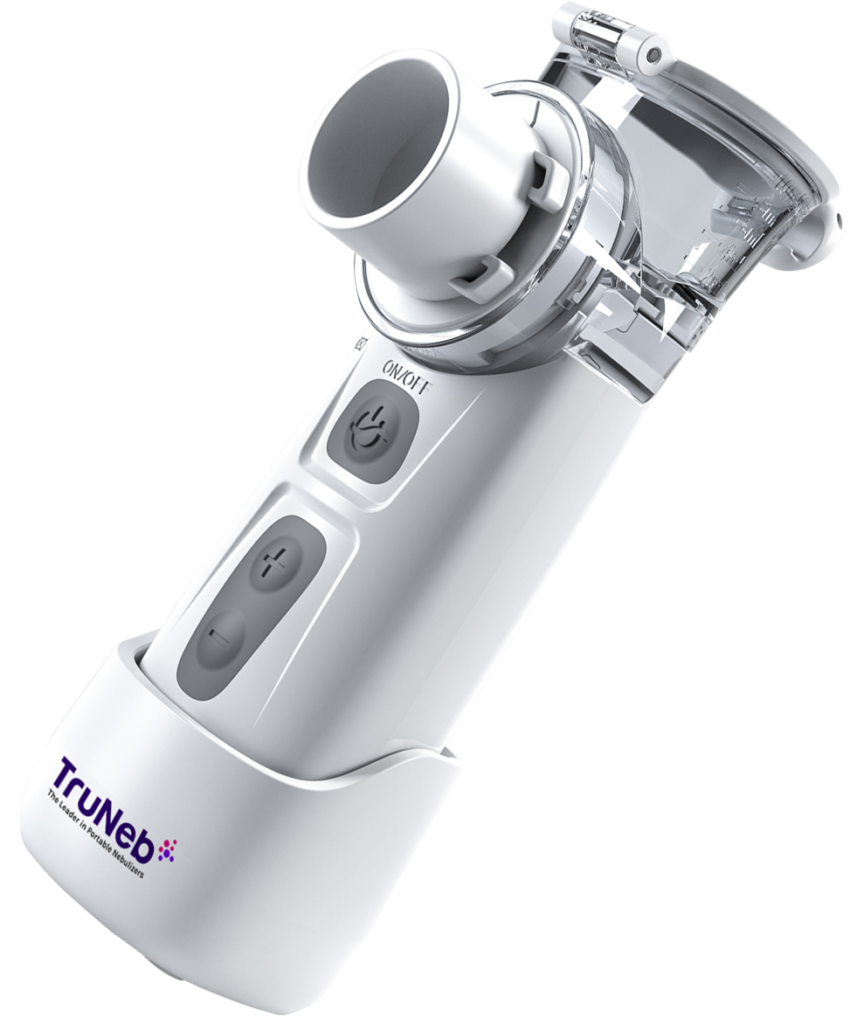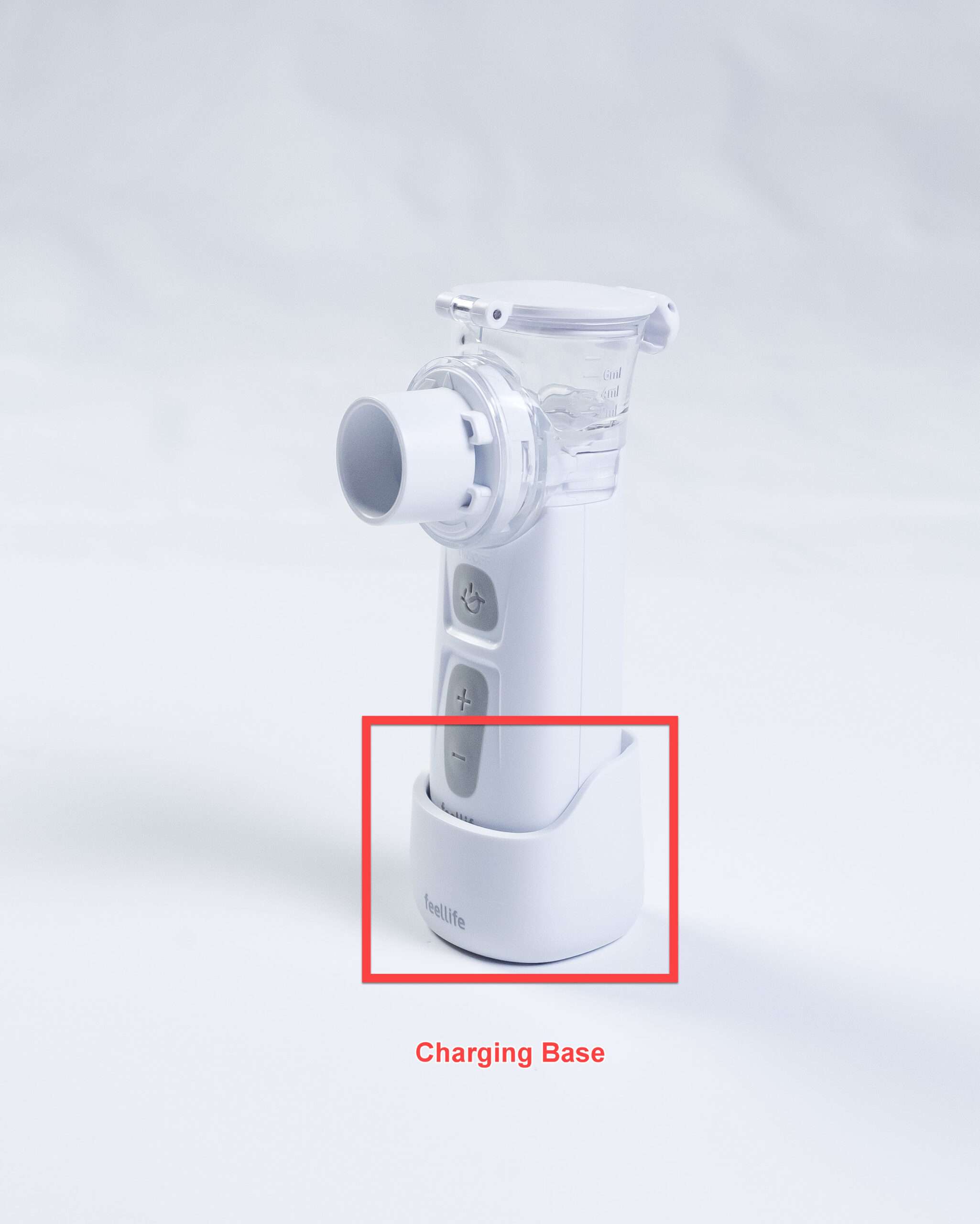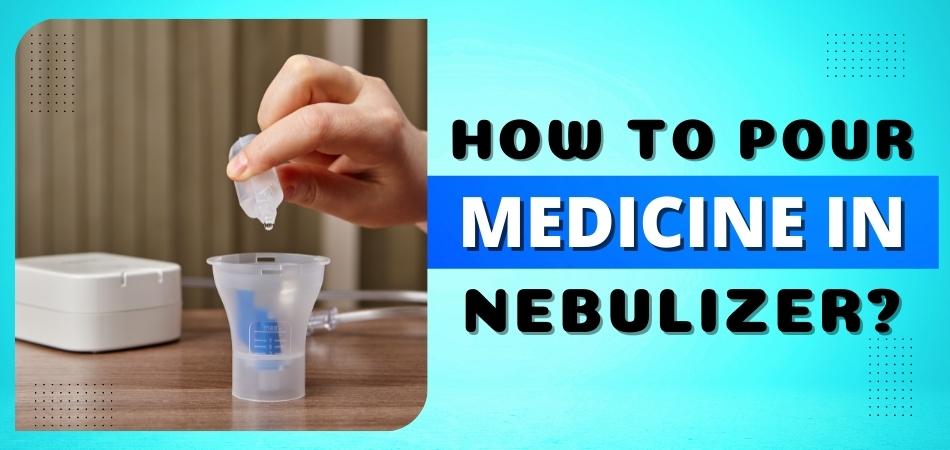If you’re like me, you may be wondering what goes in a nebulizer. I had no idea until I did some research. Nebulizers are used to deliver medicine in the form of a mist that is inhaled into the lungs. This is a great way to get the medication directly to the lungs, where it can do the most good.
There are many different types of medicines that can be delivered through a nebulizer, so it’s important to know which ones are available and how they should be used.
Let’s take a closer look at this handy piece of equipment and find out how to use it correctly for maximum benefit.
About Nebulizer
Nebulizers are machines that convert liquid medication into a fine mist, which can then be inhaled into the lungs. They are commonly used to treat asthma and other respiratory conditions. Nebulizers come in both portable and desktop models and can be powered by either electricity or batteries.
The medication is typically delivered via a flexible tubing system, which is connected to a mouthpiece or face mask. Treatment with a nebulizer typically takes 10-15 minutes, during which time the patient will breathe in the medication through the mouthpiece or face mask.
Nebulizers are an effective way to deliver medication to the lungs and can be used by both children and adults.
What Medicine Goes in a Nebulizer?
A nebulizer is a device that helps people to breathe in medication. The machine turns the liquid medication into a fine mist that can be breathed in through a mouthpiece or face mask.

Nebulizers are often used to deliver bronchodilators, which are medications that open up the airways and make it easier to breathe.
They are also used to deliver other types of medications, such as steroids, antibiotics, and mucolytics. Nebulizers are most commonly used in people with respiratory conditions such as asthma and COPD.
However, they can also be used to treat other conditions such as cystic fibrosis and pneumonia. The type of medication that is used in a nebulizer will depend on the condition being treated. For example, bronchodilators may be used to relieve symptoms of asthma, while mucolytics may be used to thin mucus in people with cystic fibrosis.
It is important to follow the instructions of a healthcare professional when using a nebulizer. This will ensure that the correct medication is used and is used correctly.
What Can You Put in a Nebulizer at Home?
A nebulizer is a medical device that converts liquid medication into a fine mist, which can then be inhaled through a mouthpiece or mask. The most common use for nebulizers is to deliver inhalable medications to people with respiratory conditions such as asthma, COPD (chronic obstructive pulmonary disease), bronchiolitis, and cystic fibrosis.
There are many different types and brands of nebulizers on the market, but they all work in basically the same way. The medication is placed in a cup called a reservoir, which is then attached to the nebulizer machine.
The machine uses compressed air to turn the liquid medication into a fine mist, which is then inhaled through the mouthpiece or mask. Nebulizers can be used with both prescription and over-the-counter (OTC) medications.
Some common examples of medications that are often used in nebulizers include
- Albuterol (Proair HFA, Ventolin HFA) – A bronchodilator that relaxes the muscles around your airways and makes it easier to breathe.
- Pulmicort (budesonide) – A steroid that reduces inflammation in your lungs.
- Xopenex (levalbuterol) – Another bronchodilator that can be used as an alternative to albuterol.
- Saline solution – A saltwater solution that can help thin out mucus so it’s easier to cough up. In general, most liquids can be used in a nebulizer as long as they’re sterile and free of particulates.
This includes water, saline solutions, normal saline-based wound irrigation solutions like Dakin’s Solution, and even some essential oils like eucalyptus oil if you’re looking for something natural to help relieve congestion.
Does a Nebulizer Require Medicine?
Nebulizers are devices that deliver liquid medication in the form of a mist, which can then be inhaled into the lungs. The medication used in a nebulizer can vary depending on the condition being treated.
For example, someone with asthma might use a nebulizer with an inhaled bronchodilator to open up their airways, while someone with COPD might use a nebulizer with an inhaled steroid to reduce inflammation.
Over the Counter Nebulizer Medicine
If you or a loved one has asthma, you know that nebulizers are a vital part of managing the condition. These devices help to deliver medication directly to the lungs, providing much-needed relief from symptoms like coughing, wheezing, and difficulty breathing.
But what happens when you can’t make it to the doctor or pharmacy for a refill of your prescription nebulizer medicine?
Thankfully, there are several over-the-counter (OTC) options available that can be used in most nebulizers. Here’s a look at three of the most popular OTC nebulizer medicines:
- Albuterol: Albuterol is a bronchodilator that helps to open up the airways and make breathing easier. It is available in both liquid and tablet form and can be found under brand names like ProAir HFA, Ventolin HFA, and AccuNeb.
- Ipratropium bromide: Ipratropium bromide is an anticholinergic medication that works by blocking certain receptors in the airways that contribute to asthma symptoms. It comes as an inhalation solution and is typically used along with albuterol. Brand names include Atrovent HFA and Combivent Respimat.
- Steroids: Steroid medications are often used to treat severe asthma attacks or flare-ups. They work by reducing inflammation in the airways, making it easier to breathe.
Common oral steroids include prednisone and methylprednisolone, while inhaled steroids include Flovent HFA, Pulmicort Flexhaler, Asmanex TwistHaler, Qvar RediHaler, etc.
Medicine Used in Nebulizer for Cough
A nebulizer is a device that helps deliver medicine in the form of a mist to your lungs. The medicine goes into your body through your mouth or nose and down into your lungs, where it can help relieve symptoms of conditions like asthma or COPD.
There are many different types of medicines that can be used in a nebulizer, but one of the most common is albuterol.
Albuterol is a bronchodilator, which means it helps to open up the airways in your lungs and make it easier to breathe. If you have an asthma attack or other breathing emergency, using albuterol in a nebulizer can help you get the relief you need quickly.
Nebulizer Medicine for Cough for Adults
If you have a cough that just won’t go away, your doctor may prescribe a nebulizer. Nebulizers are devices that turn liquid medicine into a fine mist that you can inhale. They’re commonly used to treat lung conditions such as asthma and COPD.

Nebulized medicine goes straight to your lungs, so it works quickly to relieve your cough. The medication in the nebulizer helps open up your airways so you can breathe better. It also reduces inflammation and mucus production, which can help clear out your chest congestion.
Nebulizers are easy to use and don’t take long – usually just 5-10 minutes. You’ll need to have a prescription for a nebulizer, but they’re available at most pharmacies. Be sure to follow the instructions from your doctor or pharmacist on how to use the device correctly.
There are different types of medications that can be used in nebulizers, but the most common one for treating cough is albuterol (ProAir HFA, Ventolin HFA). This medication is a bronchodilator, which means it opens up constricted airways in the lungs so you can breathe more easily. Albuterol starts working within minutes and its effects last for 4-6 hours.
Other medications that may be prescribed in a nebulizer include: ipratropium (Atrovent), fluticasone (Flovent), budesonide (Pulmicort), and formoterol (Perforomist). These drugs work by reducing inflammation in the lungs, which can help relieve coughing over time. Your doctor will determine which medication is right for you based on your individual health needs.
How to Use a Nebulizer Without Medication?
A nebulizer is a small, hand-held machine that turns liquid medication into a fine mist that can be inhaled through a mouthpiece or face mask. This type of device is often used to treat respiratory conditions such as asthma and COPD. Some nebulizers can also be used without medication to provide humidification for people with dry airways.
There are several steps involved in using a nebulizer.
First, the machine must be filled with the prescribed medication or distilled water. The medication cup should then be placed on the base of the unit and screwed in tightly.
The tubing that connects the mouthpiece or face mask to the machine should be checked for any kinks or leaks. Once everything is set up, the patient should sit in an upright position and place the mouthpiece in their mouth or put on the face mask.
They should then turn on the machine and begin breathing deeply and slowly until all of the medication has been dispensed (this usually takes 5-10 minutes).
After use, all of the parts of the nebulizer should be washed with soap and water and stored properly for future use.
Conclusion
Nebulizers are a common household item for people with asthma and other respiratory conditions. But what kind of medicine goes in a nebulizer? Depending on the condition being treated, different medications will be prescribed. Here we’re going to take a look at some of the most common types of medication used in nebulizers, and how they work to improve breathing.
Why is TruNeb™ the Best Portable Nebulizer?
The portable and accurate TruNeb™ mesh nebulizer is the best around! It provides you with a quick dose of your medications each time, making it perfect for those who have trouble remembering or carrying their prescriptions everywhere they go.
With this machine in hand (and not stuck at home), patients can get immediate relief anywhere without worrying about running out of medicine before getting back onto the track again. Never waiting too long between doses again because now there’s always an extra ready should one be needed



